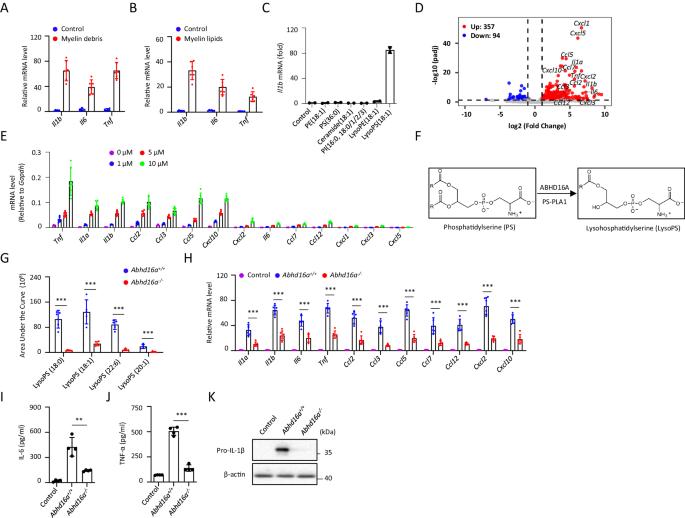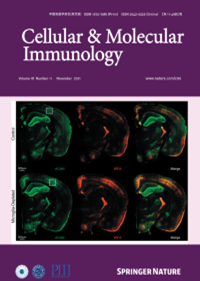GPR34 senses demyelination to promote neuroinflammation and pathologies
IF 21.8
1区 医学
Q1 IMMUNOLOGY
引用次数: 0
Abstract
Sterile neuroinflammation is a major driver of multiple neurological diseases. Myelin debris can act as an inflammatory stimulus to promote inflammation and pathologies, but the mechanism is poorly understood. Here, we showed that lysophosphatidylserine (LysoPS)-GPR34 axis played a critical role in microglia-mediated myelin debris sensing and the subsequent neuroinflammation. Myelin debris-induced microglia activation and proinflammatory cytokine expression relied on its lipid component LysoPS. Both myelin debris and LysoPS promoted microglia activation and the production of proinflammatory cytokines via GPR34 and its downstream PI3K-AKT and ERK signaling. In vivo, reducing the content of LysoPS in myelin or inhibition of GPR34 with genetic or pharmacological approaches reduced neuroinflammation and pathologies in the mouse models of multiple sclerosis and stroke. Thus, our results identify GPR34 as a key receptor to sense demyelination and CNS damage and promote neuroinflammation, and suggest it as a potential therapeutic target for demyelination-associated diseases.


GPR34 可感知脱髓鞘,从而促进神经炎症和病变。
无菌性神经炎症是多种神经系统疾病的主要驱动因素。髓鞘碎片可作为炎症刺激物促进炎症和病变,但其机制尚不清楚。在这里,我们发现溶血磷脂酰丝氨酸(LysoPS)-GPR34 轴在小胶质细胞介导的髓鞘碎片感应和随后的神经炎症中发挥了关键作用。髓鞘碎片诱导的小胶质细胞活化和促炎细胞因子表达依赖于其脂质成分LysoPS。髓鞘碎屑和LysoPS都能通过GPR34及其下游的PI3K-AKT和ERK信号促进小胶质细胞的活化和促炎细胞因子的产生。在体内,通过基因或药物方法减少髓鞘中溶血磷脂的含量或抑制 GPR34 可减轻多发性硬化和中风小鼠模型的神经炎症和病理变化。因此,我们的研究结果确定 GPR34 是感知脱髓鞘和中枢神经系统损伤并促进神经炎症的关键受体,并建议将其作为脱髓鞘相关疾病的潜在治疗靶点。
本文章由计算机程序翻译,如有差异,请以英文原文为准。
求助全文
约1分钟内获得全文
求助全文
来源期刊
CiteScore
31.20
自引率
1.20%
发文量
903
审稿时长
1 months
期刊介绍:
Cellular & Molecular Immunology, a monthly journal from the Chinese Society of Immunology and the University of Science and Technology of China, serves as a comprehensive platform covering both basic immunology research and clinical applications. The journal publishes a variety of article types, including Articles, Review Articles, Mini Reviews, and Short Communications, focusing on diverse aspects of cellular and molecular immunology.

 求助内容:
求助内容: 应助结果提醒方式:
应助结果提醒方式:


